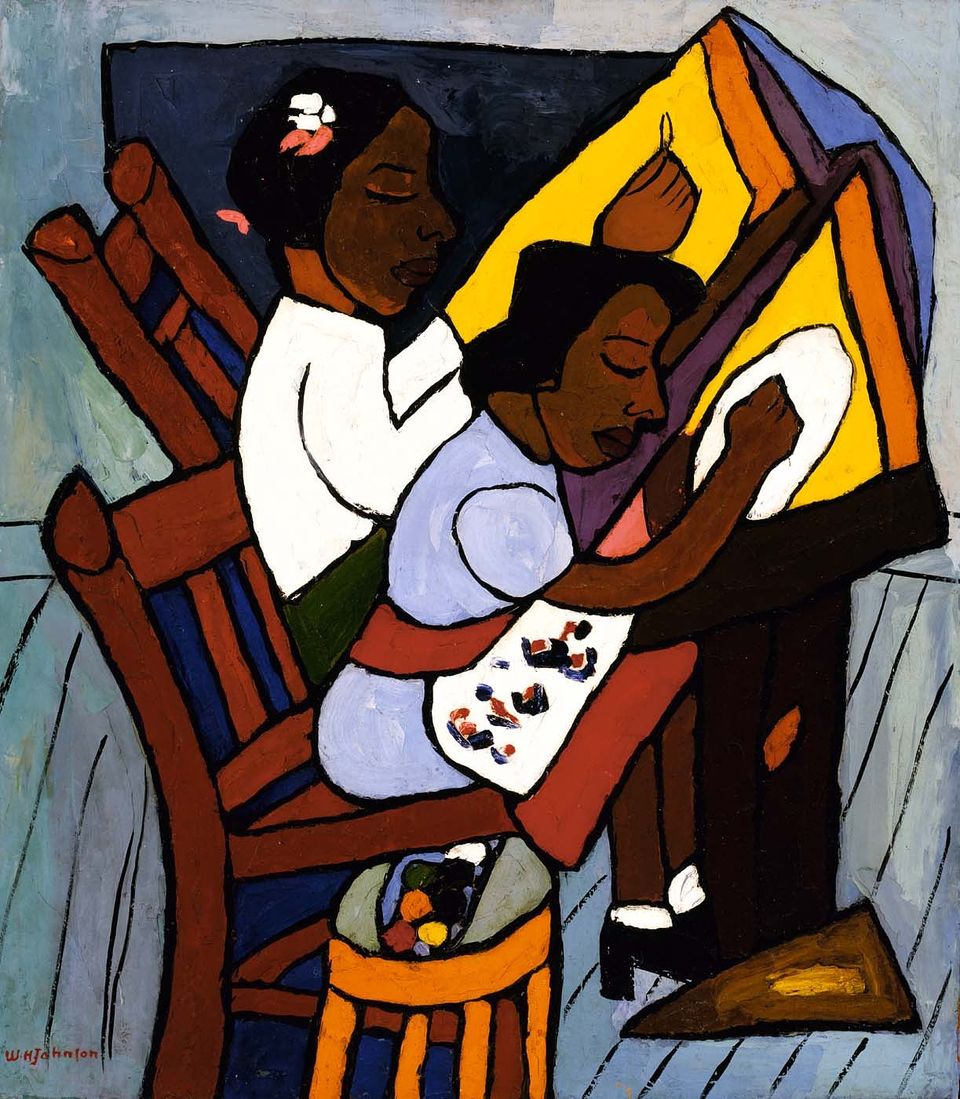
This post is part of an ongoing series on Eye Level: Q and Art, where American Art's Research department brings you interesting questions and answers about art and artists from our archive.
Question: Did William H. Johnson (1901-1970) participate in any of the New Deal art programs?
Answer: You won't see William H. Johnson's artwork in a New Deal Post Office mural or other federal government building*, but from May of 1939 through November of 1942 Johnson worked at the Harlem Community Art Center, one of more than 100 art centers that were funded by the Works Progress Administration's Federal Art Program (WPA/FAP). Johnson and his wife, Danish artist Holcha Krake, had recently returned to the United States from Europe. Although Johnson had opportunities to exhibit his art, sales of his work, like sales of all artists' work, were nonexistent. Working for the WPA was the best way for Johnson to support himself and his wife.
Unlike other art programs, The Community Art Centers did not leave a permanent record of paintings and sculptures, which may be why it is one of the lesser-known New Deal projects. However, the program had worthy goals to change the way Americans interacted with art. Many of the Community Art Centers were located in areas that were far from art galleries, museums, and academies, and they sought to bring art into the everyday life of the community. Activities at the Art Centers included lectures and art exhibitions, but the primary mission was providing art classes for all ages taught by trained and experienced artists. Through the classes, adults found an enriching leisure activity. Yet it was for children's classes, which provided a necessary outlet for expression, that the centers were especially praised.
Johnson was one of the professional artist/ instructors at the Harlem Community Art Center, and his time working in Harlem had an effect on his work. According to his biographer, Richard J. Powell, Johnson's experience with the bold children's art made at the Harlem Community Art Center encouraged his progression from expressionist painting to a brighter and simplified "primitive" style. While working in Harlem, Johnson also turned his focus towards the human figure and away from landscapes and still lifes that had occupied his time in Europe. He was inspired by the community around him and made paintings of couples in cafes, people dressed for the Savoy Ballroom and musicians. Johnson's employment with the WPA/FAP gave him the opportunity to use his skills and to develop as an artist.
For additional information about William H. Johnson and the New Deal programs look for the following books at your bookstore or library: Richard J. Powell's Homecoming: The Art and Life of William H. Johnson, Ann Prentice Wagner's 1934: A New Deal for Artists and Kathryn A. Flynn's The New Deal: A 75th Anniversary Celebration.
*Although Johnson did not complete any Post Office murals, in 2012 his work was seen by thousands of postal customers when one of his paintings was issued as a stamp. Read more about the painting and the stamp in this Eye Level post.


















